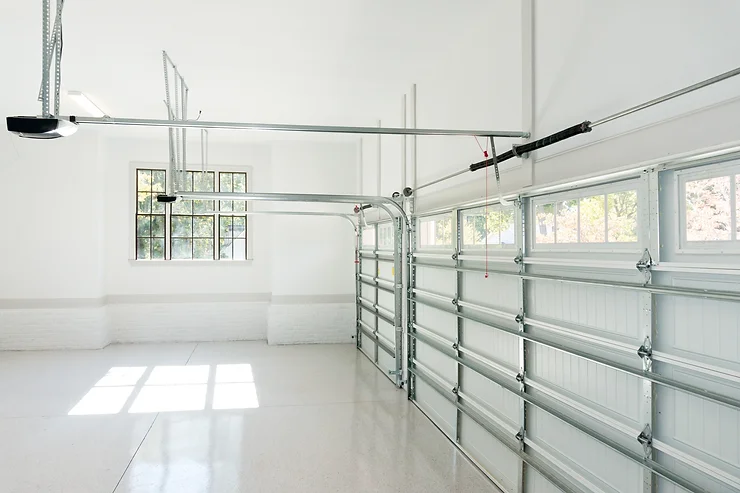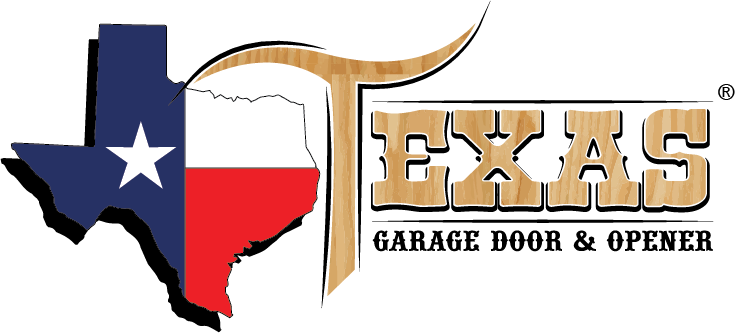Garage Door Maintenance Tips

You rely on your garage to store your belongings and access your home daily, so you want to keep your investment in tip-top shape. Performing regular maintenance on your garage door will keep it working longer and can prevent costly repairs down the road. Use these garage door maintenance tips to keep your overhead doors working smoothly for years to come.
- Observe Door
The first step in garage door maintenance is essential for identifying more apparent issues with the door. Open and close your garage door automatically and then manually. Look and listen to the door — is it running smoothly with minimal noise? Listen for unusual banging sounds and loud noises when the door is moving. Check to make sure the door isn’t catching or jerky. While opening the door manually, does it feel heavier than usual? Notice any visual or auditory signs that the door isn’t working correctly. If you find anything, you can begin correcting the issue. - Clear Tracks
Keeping the tracks clear is a simple way to maintain your overhead door. Over time, dirt and debris can collect on the tracks, creating blockages and malfunctions with the door. Gently brush debris from the tracks, then use a damp rag to wipe dirt and grime from the surface. While you can safely and efficiently clean your garage door tracks, you should leave any significant adjustments or repairs to professionals to ensure the tracks are safely and correctly repaired. - Tighten Hardware
You likely open your garage door multiple times a day, every day. If you open your garage door three to four times daily, that’s 1,000 to 1,400 cycles every year. This repeated use creates vibration, causing nuts and bolts to loosen over time. Using a socket wrench and a screwdriver, you can quickly tighten nuts, bolts and roller brackets yourself. Be careful not to overtighten hardware — this can lead to damage and faster wear on the components.
Avoid tightening red-painted hardware or hardware located on the bottom roller fixture. Tightening or adjusting these components can damage your door or compromise safety, so always leave these to professionals. - Check Cables
Visually inspect cables for frays, tears and other damage. Damaged cables can cause strain on the door parts and present a safety hazard to anyone using the garage door. Avoid adjusting or repairing the cables yourself. Cables are under high tension and help your door operate. However, they are dangerous to handle without proper training and can be unpredictable. If you see frayed or broken cables, contact a technician. Park your car outside your house and use other entrances while waiting for cable repair to protect yourself from harm. - Inspect Rollers
Garage door rollers allow the door to open and close smoothly, guiding it along the track. Damaged rollers can cause issues with the track and door operation, so inspect them for problems. Examine the rollers for cracks, chips and wear. You can replace damaged rollers, as long as they’re not directly attached to the cables or cable systems. Keep rollers clear of debris along with the tracks for the best operation. - Lubricate Hardware
Moving garage parts need regular lubrication to help with friction and wear. Lubrication is a quick and easy maintenance task you can perform without stress to keep your garage door working for years. Opening slowly is a common garage door problem that lubrication can easily fix. Use garage-door-specific lubricant to treat the springs, hinges, rollers, tracks and opener’s chain. Proper lubrication will keep your overhead door components moving smoothly and correctly.
While some garage door rollers need lubrication, nylon rollers do not. If your overhead door has nylon rollers, they will work their entire life span without needing lubricant. If you have steel or other material rollers, they’ll need lubricating about twice a year, maybe more if they see more frequent use. - Test Balance
An imbalance in your garage door puts extra stress on the other components. Over time, this additional stress will cause your garage door to wear out faster, potentially leading to severe damage and extensive repairs. To test your door’s balance, close the door completely. After closing the door, disconnect the opener by pulling the release handle — typically a red cord. Then lift the door manually until it sits halfway open and let go. If your door is correctly balanced, it will stay in the half-open position.
If your door fails to stay in place, you might have a cable or spring problem. These components are under high tension, so avoid working with them yourself. Leave rebalancing garage doors to professionals, so contact a technician for assistance if your door is improperly balanced. - Replace Weatherstripping
Weatherstripping is the rubber seal at the bottom of your overhead door that helps block off your garage interior from water damage and the elements. Replacing a cracked or brittle weatherstrip can help protect your garage from the rainy season and keep the outside from getting in. Weather seals also keep air from flowing between your garage and outside, saving you money on energy costs and maintaining a comfortable temperature inside the space. Because weatherstripping prevents elements from coming indoors, always check it during season changes for the best energy efficiency. - Test Safety Features
When performing regular maintenance, always check the safety features. The photoelectric sensor and mechanical auto-reverse features prevent your garage from closing on objects and causing safety problems. You can quickly test these features at home with a few household objects.
For checking the photosensor, wave a broom under the door as it’s automatically closing. To test the mechanical auto-reverse, place a wood plank or brick under the door. Start the door closing — when the door touches the object, it should reverse. If either of these features fails to reverse, contact a professional to look at your safety features.
If your door is older, it may not have these safety measures. If this is the case, you should get your garage door and opener replaced. These features help protect people and objects from garage door injury or damage. Installing a door and opener with modern safety measures will keep your family safe while using the garage door. - Clean Door
Finally, always inspect the garage door itself for wear and tear. Overhead doors are constantly exposed to grime, dirt, debris and harsh weather. Steel doors can form rust spots, which you’ll need to sand and repaint. Wood doors can warp when exposed to water damage, so look for bending in the door. Wood also needs regular repainting or restaining to protect the wood.
You want your garage door to look clean and new, so wash it to prevent dirt. Use a mild soap and a wet cloth to remove all grime and debris on both sides of the door.
Protect Your Garage Door With Texas Garage Door and Opener.
Preventative maintenance can protect your garage door from regular wear and tear damage. If you find problems with your garage door while maintaining it, call a service you trust to fix your door. At Texas Garage Door and Opener, our experienced team will examine your garage door and perform any necessary repairs to give you full use of your garage again. If you’re experiencing an issue with your garage door, schedule a service with us today!
